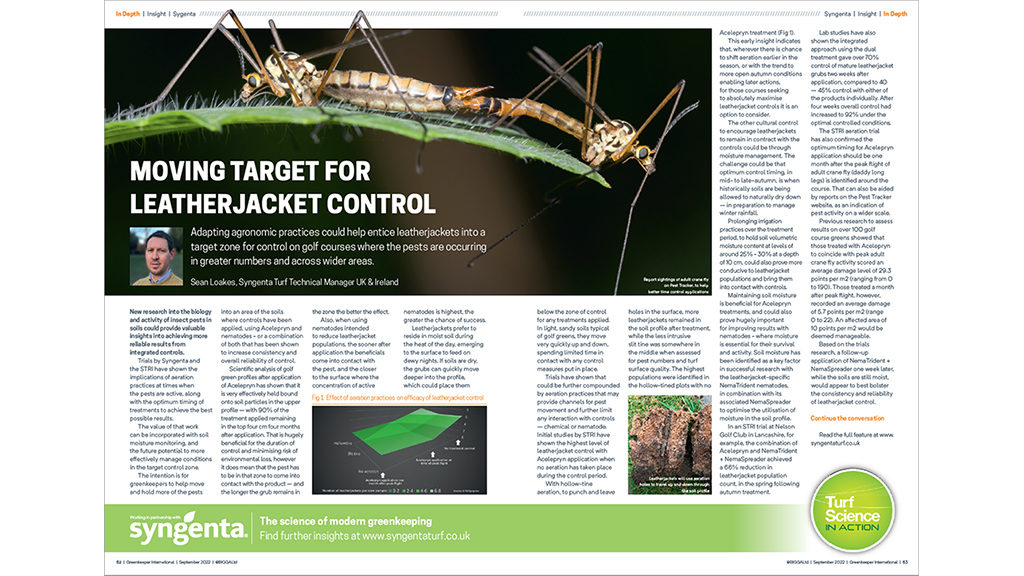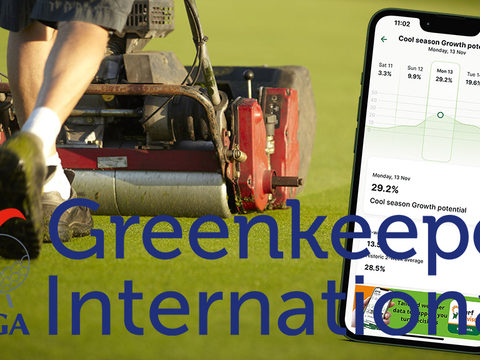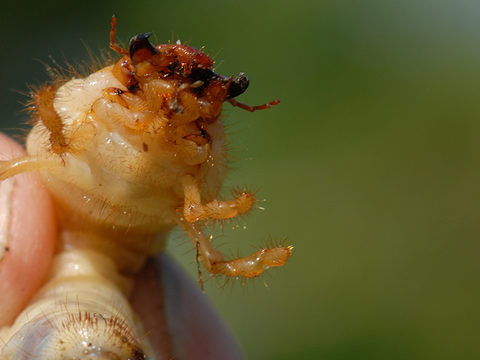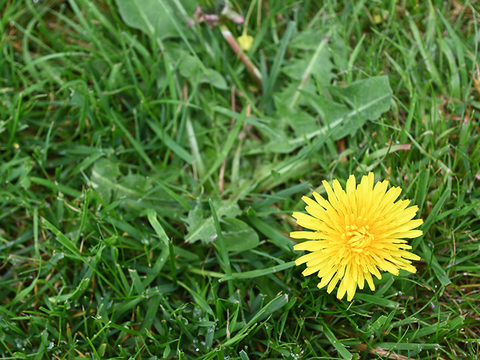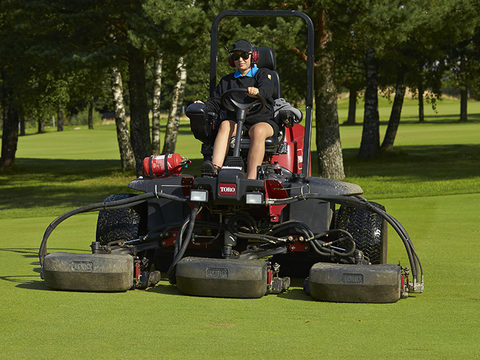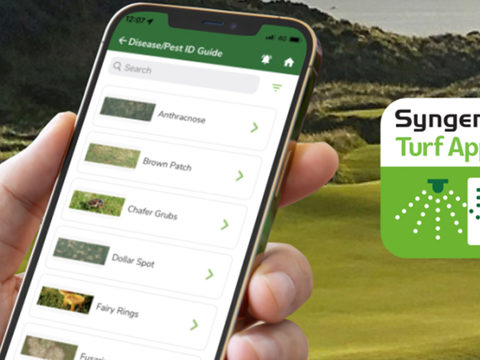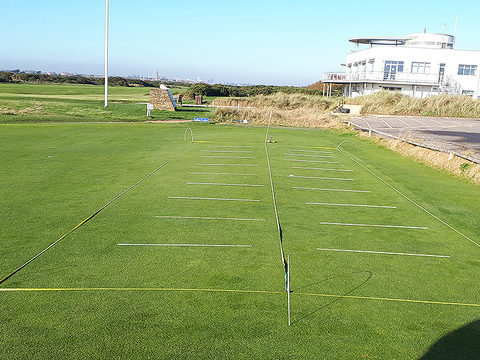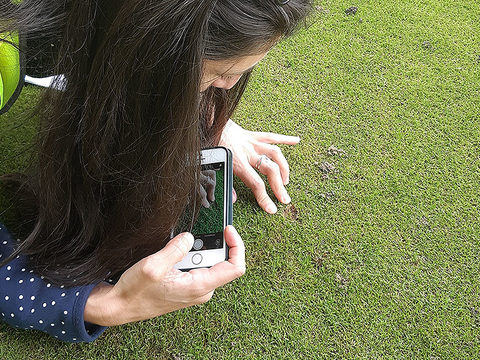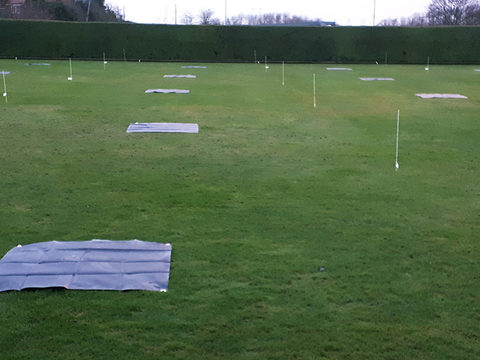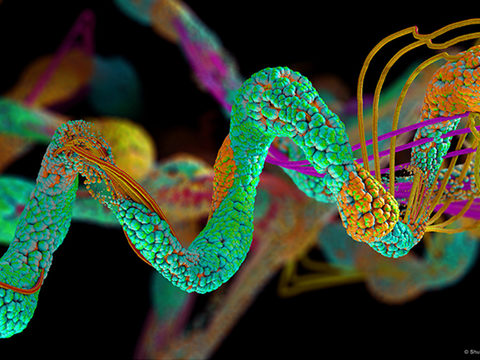Moving target for leatherjacket control
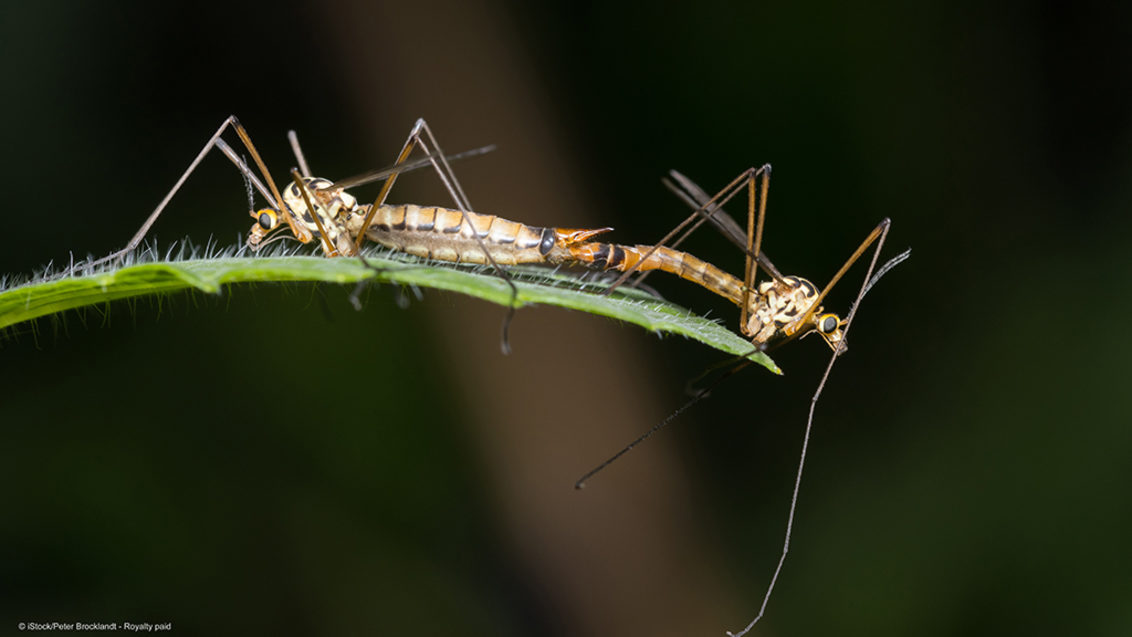
Adapting agronomic practices could help entice leatherjackets into a target zone for control on golf courses, where the pests are occurring in greater numbers and across wider areas.
The techniques provide valuable clues into achieving more reliable results from integrated controls, writes Sean Loakes (below) in his latest Greenkeeper International InSight article.

The value of that work can be incorporated with soil moisture monitoring, and the future potential to effectively manage conditions in the target control zone.
Scientific analysis of golf green profiles after application of Acelepryn has shown that it is very effectively held bound onto soil particles in the upper profile – with 90% of the treatment applied remaining in the top four cm four months after application.
That is hugely beneficial for the duration of control and minimising risk of environmental loss, however it does mean that the pest has to be in that zone to come into contact with the product – and the longer the larvae remains in the treatment area the better the effect.
Also, when using nematodes intended to reduce leatherjacket populations, the sooner after application the beneficials come into contact with the pest, and the closer to the surface where the concentration of active nematodes is highest, the greater the chance of success.
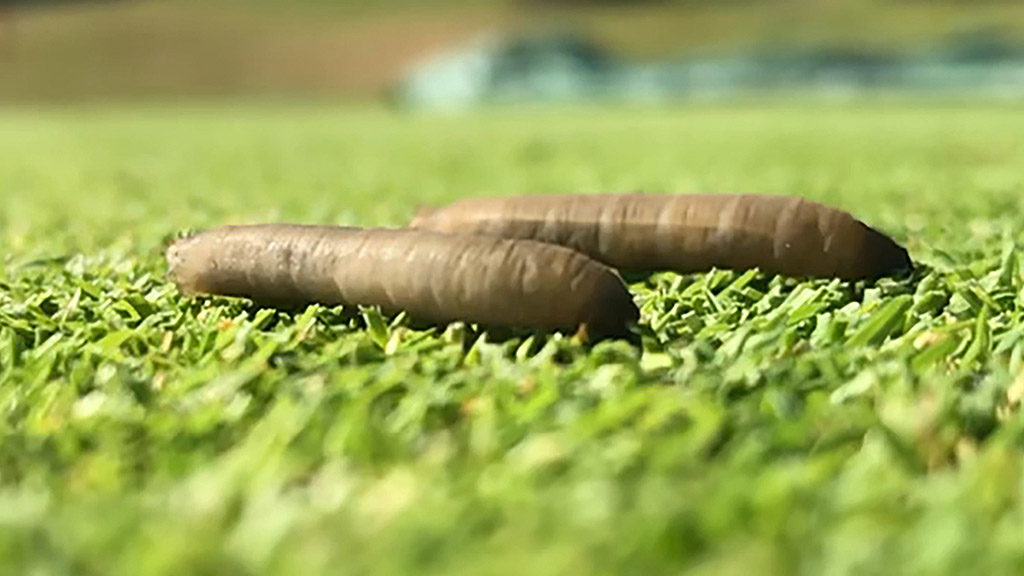
The intention for greenkeepers is to move and hold more of the pests into an area of the soils where controls have been applied, using Acelepryn and nematodes - or a combination of both that has been shown to increase consistency and overall reliability of control.
Leatherjackets prefer to reside in moist soil during the heat of the day, emerging to the surface to feed on dewy nights. Creating dark wet surfaces under plastic sheets is recognised as a way to entice leatherjackets to the surface and can enable larger numbers to be physically cleared.
If soils are dry, the grubs can quickly move deeper into the profile, which could place them below the zone of control for any treatments applied.
In light, sandy soils, they move very quickly up and down, spending limited time in contact with any control measures put in place.
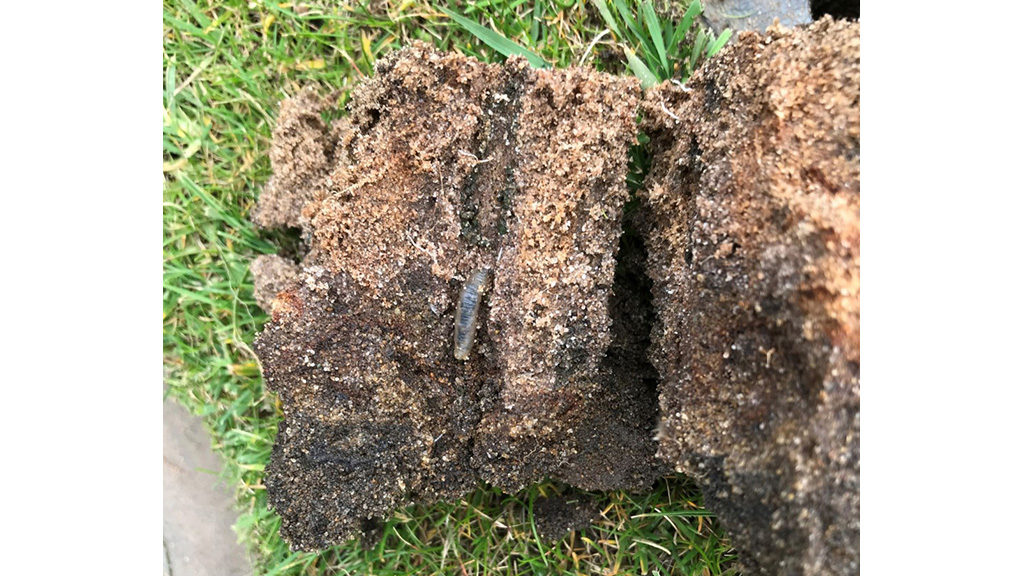
Trials have shown that could be further compounded by aeration practices that may provide channels for pest movement (above) and further limit any interaction with controls – chemical or nematode. Initial studies by STRI have shown the highest level of leatherjacket control with Acelepryn application when no aeration has taken place during the control period (below).
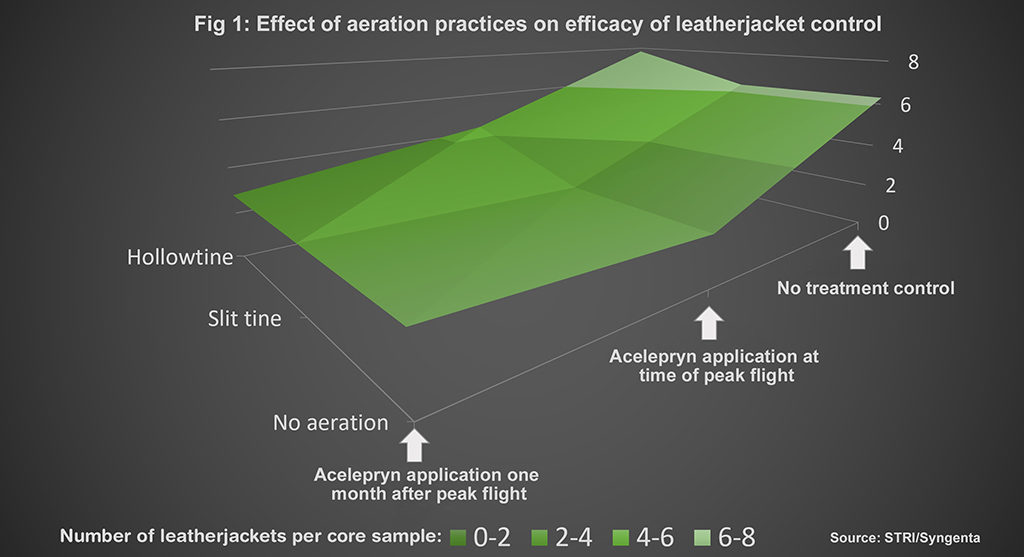
Hollow-tine aeration to punch and leave holes in the surface resulted in more leatherjackets remaining in the soil profile, while the less intrusive slit tine was somewhere in the middle when assessed for pest numbers and turf surface quality. The highest populations were identified in the hollow-tined plots with no Acelepryn treatment.
This early insight into the results indicates that, where possible, greenkeeping teams who know the areas subject to highest pressure may look to adjust aeration timing and practices. That will inevitably be constrained by time availability for maintenance week and while growing conditions remain favourable for recovery.
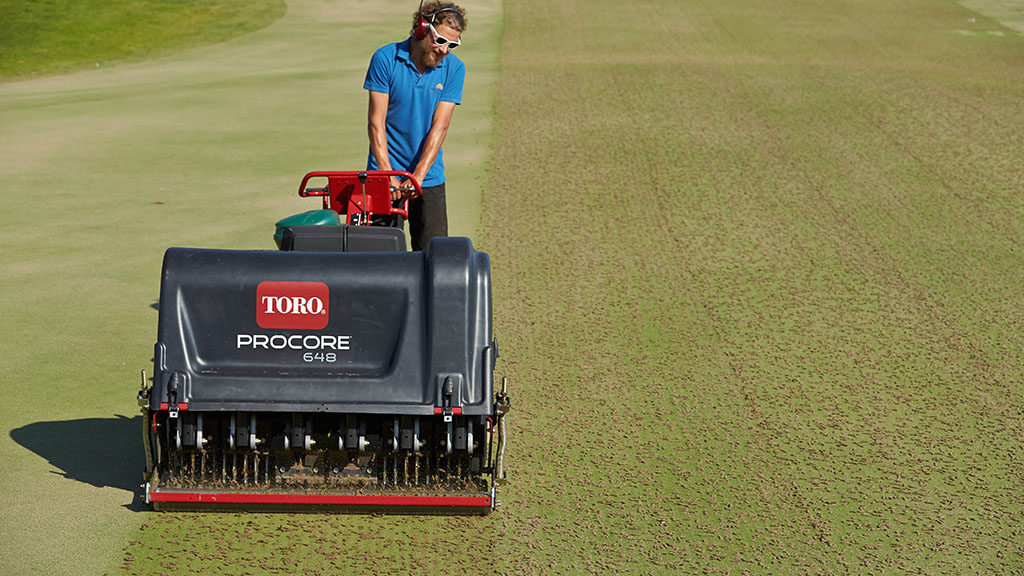
But wherever there is chance to shift aeration earlier in the season, or with the trend to more open autumn conditions enabling later actions, for those courses seeking to absolutely maximise leatherjacket controls it is an option to consider.
The other cultural control to encourage leatherjackets to remain in contract with the controls could be through moisture management.
The challenge could be that optimum control timing, in mid- to late-autumn, is when historically irrigation schedules have typically finished and soils are being allowed to naturally dry down – in preparation to manage winter rainfall.
Prolonging irrigation practices over the treatment period, to hold soil volumetric moisture content at levels of around 25% - 30% at a depth of 10 cm, could also prove more conducive to leatherjacket populations and bring them into contact with controls.
With the trend toward longer, hotter summers irrigation schedules are being stretched longer anyway, balanced with the difficult challenge of water availability and cost for most courses.
Maintaining soil moisture is beneficial for Acelepryn treatments - where application onto moist soils is recommended as best practice - and could also prove hugely important for improving results with nematodes, where moisture is essential for their survival and activity.
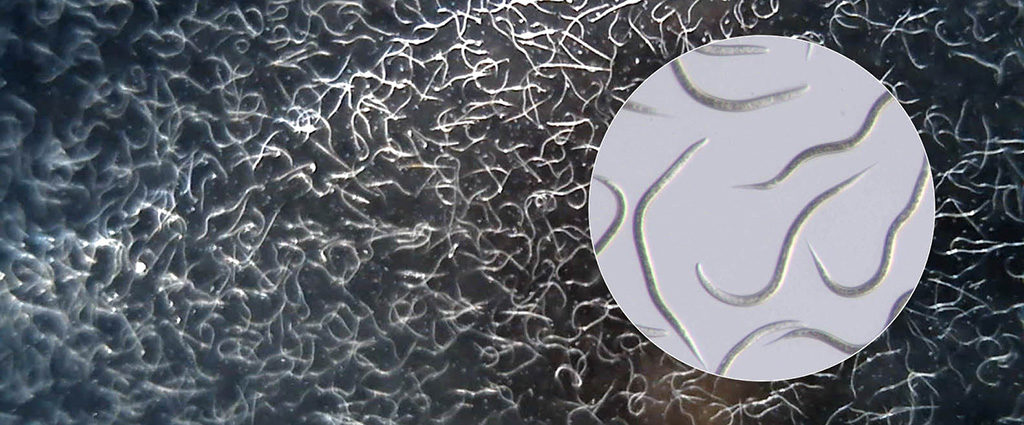
Soil moisture has been identified as a key factor in successful research with the leatherjacket-specific NemaTrident nematodes, in combination with its associated NemaSpreader to optimise the utilisation of moisture in the soil profile.
In an STRI trial at Nelson Golf Club in Lancashire, for example, the combination of Acelepryn and NemaTrident + NemaSpreader achieved a 66% reduction in leatherjacket population count, in the spring following an autumn treatment.
The STRI aeration trial has also confirmed the optimum timing for Acelepryn application should be one month after the peak flight of adult crane fly (daddy long legs) is identified around the course. That can also be aided by reports on the Pest Tracker website, as an indication of pest activity on a wider scale.
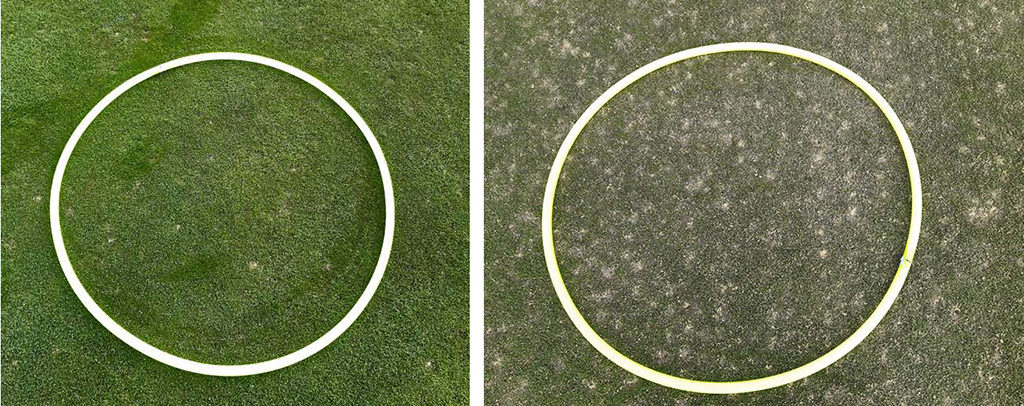
Previous research to assess results on over 100 golf course greens showed that those treated with Acelepryn to coincide with peak adult crane fly activity scored an average damage level of 29.3 points per m2 (ranging from 0 to 190). Those treated a month after peak flight, however, recorded an average damage of 5.7 points per m2 (range 0 to 22). An affected area of 10 points per m2 would be deemed manageable.
Best use practice guidelines for Acelepryn when targeting leatherjackets suggest mowing prior to application onto moist soils, and then to maintain soil moisture levels.
Spray water volume should ideally be at 1000 l/ha, applied through 08 XC Soil Nozzles to move as much product as possible to the soil surface. Application with a forecast of light rain or heavy dew to wet the leaf surface is also preferable.
Based on the trials research, a follow-up application of NemaTrident + NemaSpreader one week later, while the soils are still moist, would appear to best bolster the consistency and reliability of leatherjacket control.



